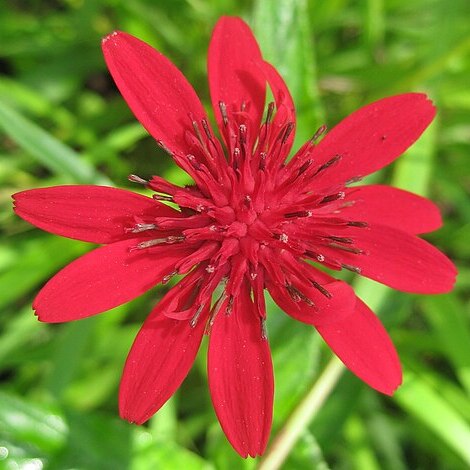Phyllaries many-seriate, appressed imbricate, the innermost grading into the paleae of the common receptacle, fimbriate-denticulate on the margins or sometimes denticulate about the apex only; apices sometimes long caudate, or in inner phyllaries expanded ovate and appendage-like.
Stems 1-several, simple or branching near the apex, araneose-lanate to coarsely pubescent Leaves alternate, semi-amplexicaul, usually discolorous, indumentum as for stem but denser on the lower surface, sometimes ± scabrid.
Achenes doliform-cylindric, c. 5-angled or ribbed, usually with a ± swollen or lobed cartilaginous carpopodium at the base, minutely puberulous or glabrous; pappus of 4–5 caducous barbellate setae.
Vegetative indumentum of appressed fine ± matted hairs usually intermixed with large patent many-celled uniseriate hairs each bearing a fine filamentous terminal cell.
Capitula homogamous and discoid or heterogamous with inner florets regular and outer florets bilabiate-radiate, 1-many, solitary and terminal on stem and branches.
Disk-florets deep-red or creamy-white, occasionally orange-tinged, hermaphrodite and actinomorphic, abruptly dilated into a deeply lobed limb, lobes erect linear.
Ray-florets when present functionally male, with deep-red bilabiate-radiate corollas, outer lip (ray) large 3-fid, inner lip shorter consisting of 2 linear lobes.
Styles deeply 2-fid, branch apices shortly conical with a sub-distal fringe of hairs.
Annual herbs, or suffrutices with annual stems from woody rootstocks.
Anther bases produced into oblong fimbriate or ciliolate tails.
Involucres ± broadly campanulate, ± truncate at the base.
Receptacle paleate.
